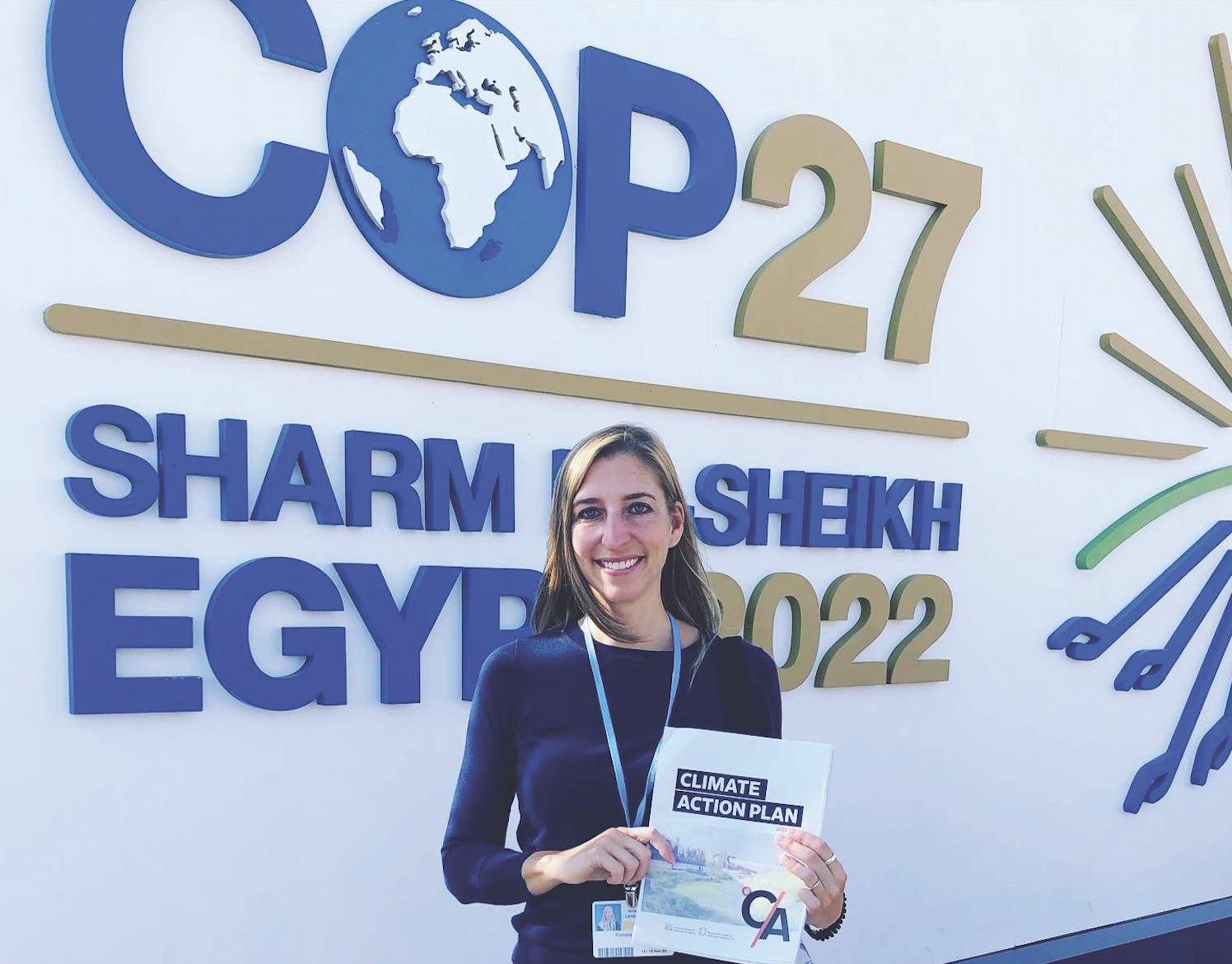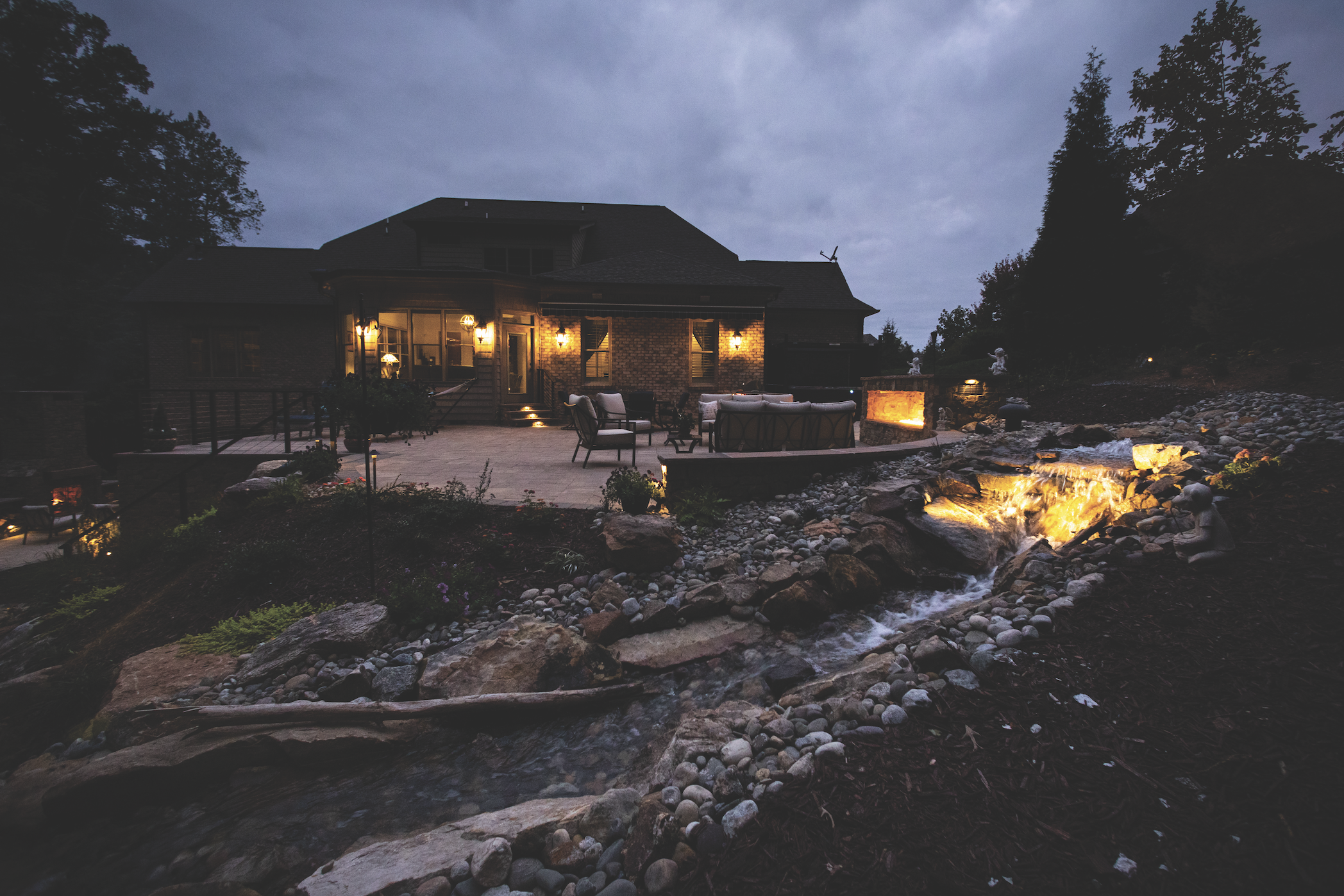Using Permaculture for a Sustainable Future
As Americans, we tend to be known mostly as consumers. Having a completely self-sufficient lifestyle, responsibly utilizing the Earth’s resources to...
.png?width=2122&height=1412&name=Magdalena%20Aravena%20(1).png)
Redefining Leadership Within the Landscape Industry
Reflective leadership is a key aspect of a successful landscape company. The green industry is people centric, involving employees and clientele with all kinds of race, age, gender and economic characteristics. People in leadership roles should mirror this diverse population. A strong voice in the design industry embodies and advocates for this idea.
.png?width=289&height=264&name=Magdalena%20Aravena%20(3).png) Magdalena Aravena is a licensed landscape architect and founding principal of Studio Siembra based in Colorado. She is an active member of the American Society of Landscape Architects (ASLA), serving on ASLA panels, with the ASLA Board of Trustees, building ASLA outreach programs and even as the president for the ASLA’s Illinois chapter. The ASLA has celebrated Magdalena’s work several times, presenting her with the 2020 Outstanding Service Award and the 2021 Emerging Professional Honor. These accomplishments came all within roughly seven years of her personal and professional work. She graduated from the University of California at Davis with a Bachelor's degree in Landscape Architecture in 2015. She is a first-generation graduate, having grown up in Chile and moved to the United States in her early years. Magdalena now manages her own design firm in the Denver area, is a lecturer at the University of Colorado Boulder and a guest speaker at many universities and events nationwide.
Magdalena Aravena is a licensed landscape architect and founding principal of Studio Siembra based in Colorado. She is an active member of the American Society of Landscape Architects (ASLA), serving on ASLA panels, with the ASLA Board of Trustees, building ASLA outreach programs and even as the president for the ASLA’s Illinois chapter. The ASLA has celebrated Magdalena’s work several times, presenting her with the 2020 Outstanding Service Award and the 2021 Emerging Professional Honor. These accomplishments came all within roughly seven years of her personal and professional work. She graduated from the University of California at Davis with a Bachelor's degree in Landscape Architecture in 2015. She is a first-generation graduate, having grown up in Chile and moved to the United States in her early years. Magdalena now manages her own design firm in the Denver area, is a lecturer at the University of Colorado Boulder and a guest speaker at many universities and events nationwide.
Magdalena credits her accomplishments to her “yes” attitude, saying she is always ready to step up to any request or challenge. Her vision and goals are also motivators.
“I’m always moving, for better or worse!” she says. “I try to say yes to all the opportunities that come, whether volunteering for local positions or being on the task force for an initiative. I’m naturally curious and enjoy being in important conversations. I want to be a game player or decision maker.”
.png?width=978&height=1254&name=Magdalena%20Aravena%20(5).png)
.png?width=694&height=678&name=Magdalena%20Aravena%20(7).png)
Pro Landscaper [SYNKD] talked to Magdalena more about her thoughts on leadership, diversity and inclusion.
You represent a number of people groups: women, immigrants, Latinos, young professionals. How does that influence and motivate your pursuit of leadership positions?
I want to show that there's people that look like me who should be in those roles. I've been on about half a dozen panels speaking on diversity, equity and inclusion in the industry. During each, I try to provide my own perspective and experience. It has been really interesting to me to be that voice.
What do you hope comes from these conversations?
Having these panels and committees helps bring more awareness to the challenges that different people face. Depending on your history, education levels, the native languages you speak, your gender, there's lots of different factors that come into play. Understanding those factors really helps businesses and the workforce. A leader who can relate to their employees is going to be more successful. They must show empathy and sympathy with the challenges their workers face. Leaders also need to reflect the communities they are serving. They must relate to who they’re designing for and understand their needs or lifestyles. The more that can become an inherent part of the design, build and maintenance process, the better.”
How does this become an inherent part of the industry?
Communication and awareness, to start. That is one of the most important parts of the process. Also, being very intentional and choosing to bring diversity into the workforce, proactively pursuing that. Then, finding ways to be inclusive and provide better experiences for people. People of color throughout the country still feel a lot of obstacles to creating a practice, obtaining licensure, reaching higher positions of leadership or even just being fairly compensated. We're seeing progress in firms being flexible and welcoming to different types of professionals that are out there, but we have a lot of room to grow. Another important step, we need to bring people in sooner. Teaching grade school students about landscape architecture and design, for example. This is all a part of retaining the right people and planning for the future of our industry.
.png?width=282&height=370&name=Magdalena%20Aravena%20(4).png) What advice would you give to those hoping to reach leadership positions in the industry?
What advice would you give to those hoping to reach leadership positions in the industry?
I have had a much better experience than a lot of my peers. There are certain micro-aggressions that you get as a woman or as someone who looks the way that I do. Something that really helped me, though, is networking within the industry. These different associations and awards can really be used as an opportunity to share ideas and be inspired by your peers. It's been really great to be introduced to different people who I probably wouldn't have met and who maybe wouldn’t have been interested in meeting me. These connections have really opened doors for me. Another important thing is to establish your own leadership style. Leadership looks the way it does now because people often get an inclination to lead in the ways that they’ve seen. I am very rooted in what I believe and how I want to do things. In my own practice, I carefully choose who I collaborate with. It is something I am really passionate about and really focus on.
How did you get to running your own practice at such an early phase in your career?
After I graduated U.C. Davis, I practiced in Sacramento for a couple of years then in Chicago. During that time I was able to practice almost every part of the field. Residential, industrial, commercial, private, I’ve hit almost every type of project that you can imagine. Even in college, I became really involved in different parts of the industry and that is how I built a foundation in the profession. A large part of my success is how active I've been and how much I've been able to move throughout the industry. People have really supported and advocated for me, which is critical.
What do you hope to see happen in the industry in the years to come?
Overall, just pushing the boundaries of what everything looks like now. Professionals need to develop different leadership styles and realize that different practices can look a lot of different ways. And it should look a lot of different ways! There should be a space for all different models of work, communication and engagement. Everyone has similar goals, right? They can reach those goals in a lot of different ways, and that is OK. No, it's good actually. It is encouraged.
.png?width=1750&height=1174&name=Magdalena%20Aravena%20(2).png)
.png?width=1054&height=946&name=Magdalena%20Aravena%20(6).png)
As Americans, we tend to be known mostly as consumers. Having a completely self-sufficient lifestyle, responsibly utilizing the Earth’s resources to...

Pamela Conrad is Changing the Way the Industry Combats Climate Change
 Read More
Read More